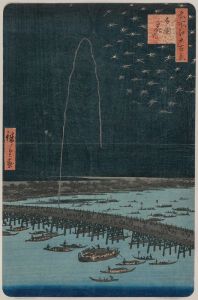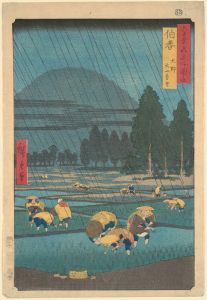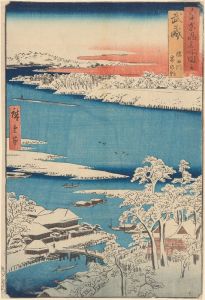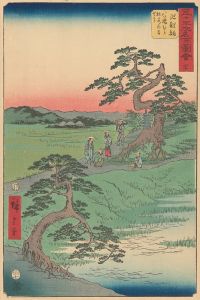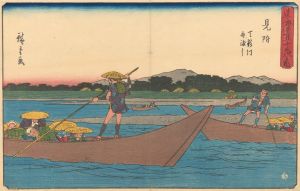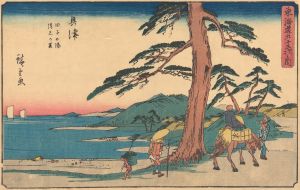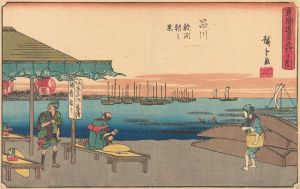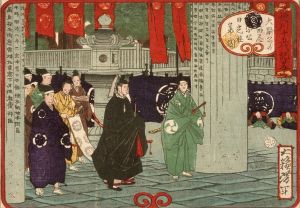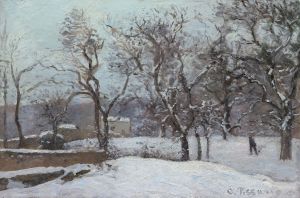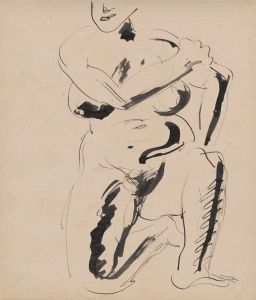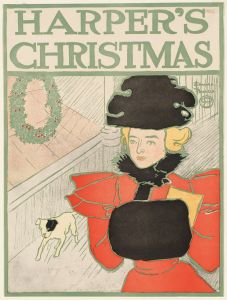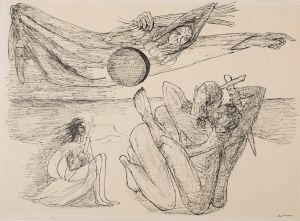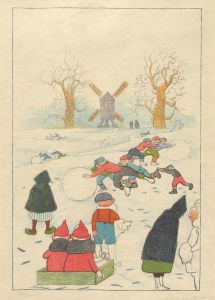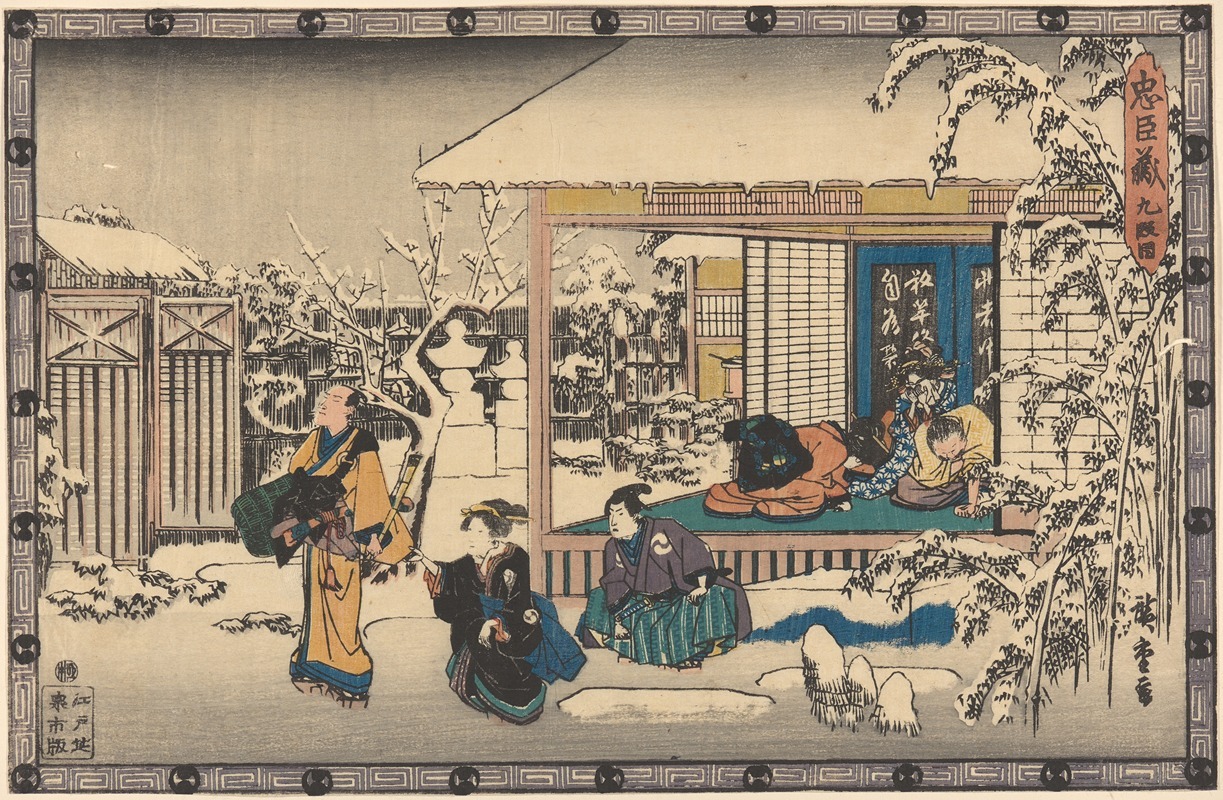
Oishi Leaving Home in Snow
A hand-painted replica of Andō Hiroshige’s masterpiece Oishi Leaving Home in Snow, meticulously crafted by professional artists to capture the true essence of the original. Each piece is created with museum-quality canvas and rare mineral pigments, carefully painted by experienced artists with delicate brushstrokes and rich, layered colors to perfectly recreate the texture of the original artwork. Unlike machine-printed reproductions, this hand-painted version brings the painting to life, infused with the artist’s emotions and skill in every stroke. Whether for personal collection or home decoration, it instantly elevates the artistic atmosphere of any space.
Oishi Leaving Home in Snow is a woodblock print by the renowned Japanese ukiyo-e artist Andō Hiroshige. Hiroshige, born in 1797 and deceased in 1858, was a master of the ukiyo-e genre, which flourished in Japan from the 17th to the 19th centuries. This genre is characterized by its woodblock prints and paintings that depict landscapes, tales from history, the theater, and scenes from everyday life.
The print "Oishi Leaving Home in Snow" is part of Hiroshige's series "Seichū gishi den" (Biographies of Loyal and Righteous Samurai), which illustrates the famous story of the Forty-seven Ronin, also known as the Ako incident. This historical event took place in the early 18th century and has been a popular subject in Japanese art and literature. The tale revolves around a group of samurai who became ronin (masterless samurai) after their lord, Asano Naganori, was compelled to commit seppuku (ritual suicide) for assaulting a court official named Kira Yoshinaka. The ronin, led by Oishi Kuranosuke, plotted for years to avenge their master's death, culminating in an attack on Kira's mansion, which resulted in Kira's death.
In this particular print, Hiroshige captures the poignant moment of Oishi Kuranosuke leaving his home in the snow, a scene that symbolizes the beginning of the ronin's journey towards avenging their lord. The use of snow in the composition adds a layer of solemnity and tranquility, contrasting with the underlying tension and resolve of the samurai's mission. Hiroshige's skillful use of color and composition brings a sense of movement and emotion to the scene, highlighting the dedication and loyalty of Oishi and his fellow ronin.
Hiroshige's work is celebrated for its innovative compositions and ability to convey the beauty and transience of nature, as well as the depth of human emotion. His prints often feature delicate gradations of color and a keen attention to detail, which can be seen in the intricate patterns of the falling snow and the textures of the clothing worn by Oishi. The artist's ability to capture the essence of a moment and the spirit of a story has made his work enduringly popular both in Japan and internationally.
"Oishi Leaving Home in Snow" exemplifies Hiroshige's mastery of the ukiyo-e form and his ability to infuse narrative scenes with a sense of atmosphere and emotion. The print not only serves as a visual representation of a significant historical event but also reflects the cultural values of loyalty, honor, and perseverance that are central to the story of the Forty-seven Ronin. Through his art, Hiroshige has contributed to the preservation and dissemination of this legendary tale, ensuring its place in the cultural memory of Japan and beyond.





